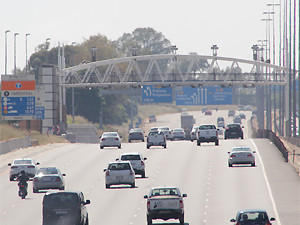
The SA National Roads Agency has put all bond auctions on ice, pending the final decision on e-tolling, expected to be announced by deputy president Cyril Ramaphosa soon.
The decision by the inter-governmental task team under Ramaphosa - which has been exploring funding options following an e-toll review - will provide certainty to investors and ratings agencies, says the state's roads agency. "Sanral will not go to the market until it gets that certainty."
Sanral says it has enough money, at least for the next few months, to fund its toll portfolio, which constitutes 15% of its network. "We don't want to increase the overall debt until we have certainty.
"The spreads are moving out for most state-owned enterprises, so it's not a good time to fund, if you do not need it."
There are two bonds maturing in September, most of which the agency has refinanced.
Sanral's recent bond auctions have proven unsuccessful, something the roads agency has blamed the e-toll review - instituted by Gauteng premier David Makhura around the middle of last year - for.
Missing money
On Tuesday, after transport minister Dipuo Peters' budget vote speech, the Democratic Alliance (DA) highlighted Sanral's cash concerns to Parliament.
DA shadow minister of transport Manny De Freitas noted e-toll compliance levels peaked at around 45% only in June 2014, despite Sanral's multimillion-rand marketing spend throughout 2014.
"This translates to R120 million per month, well short of their original target of R250 million per month."
De Freitas said "the absence of Sanral's ability to enforce the e-toll policy and the growing public anger" has reduced the scheme's monthly e-toll revenue collections to around R60 million by the end of February 2015.
It is estimated less than 23% of users pay for the use of the freeways.
Share